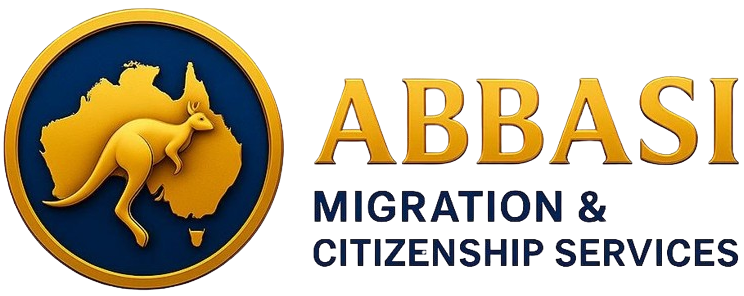info@abbasimigration.com


The Australian Partner Visa allows you to live with your spouse or de facto partner in Australia — whether you’re applying from inside or outside the country.
In this guide, we’ll explain everything you need to know about the Partner Visa (Subclass 820/801 & 309/100), including eligibility, cost, timelines, and how Abbasi Migration & Citizenship Services can help you prepare a strong application in 2025.
There are two main categories depending on where you apply from:
| Location | Temporary Visa | Permanent Visa |
|---|---|---|
| Inside Australia (Onshore) | Subclass 820 | Subclass 801 |
| Outside Australia (Offshore) | Subclass 309 | Subclass 100 |
Tip: You first apply for the temporary visa (820 or 309) and later transition to the permanent visa (801 or 100)
To be eligible for a Partner Visa, you must:
✅ Be in a genuine and ongoing relationship with an Australian citizen, permanent resident, or eligible New Zealand citizen
✅ Be legally married or in a de facto relationship (at least 12 months)
✅ Be over 18 years old
✅ Meet health and character requirements
✅ Have no visa cancellations or refusals in your history
Note: Same-sex couples are fully eligible under the Partner Visa program
You must provide strong relationship evidence to prove your partnership is genuine:
Tip: Attach at least 3–4 types of relationship evidence covering all areas of life — financial, social, household, and commitment.
Processing times vary depending on your relationship type and documentation quality.
| Visa | Estimated Time (2025) |
|---|---|
| Subclass 820 (Onshore) | 20–26 months |
| Subclass 801 (Permanent) | 12–20 months after 820 |
| Subclass 309 (Offshore) | 14–20 months |
Tip: The stronger your documentation, the faster your case is finalized.
Step 1: Check Eligibility
Confirm your relationship meets the legal and immigration criteria.
Step 2: Gather Documents
Collect identity, sponsorship, and relationship evidence.
Step 3: Lodge the Application
Apply online through ImmiAccount and pay the visa fee.
Step 4: Wait for Temporary Visa Grant
If applying onshore, you’ll receive a bridging visa while waiting.
Step 5: Permanent Visa Assessment
After 2 years, your relationship is reassessed to grant permanent residence.
| Visa | Estimated Time (2025) |
|---|---|
| Subclass 820 (Onshore) | 20–26 months |
| Subclass 801 (Permanent) | 12–20 months after 820 |
| Subclass 309 (Offshore) | 14–20 months |
| Subclass 100 (Permanent) | 12–18 months after 309 |
If your partner is already in Australia, apply for Subclass 820/801.
Avoid these common mistakes:
Tip: A professional migration agent can help you prepare a clear and credible application.
At Abbasi Migration, we have helped dozens of couples successfully obtain their Partner Visa by:
Book your consultation today:
Book A Consultation
Yes, once your temporary partner visa (820 or 309) is granted, you can work and study in Australia.
No, de facto partners are also eligible.
Yes, offshore applicants can travel freely. Onshore applicants need travel permission (BVB) while on a bridging visa.
Usually 2 years from your temporary visa grant date, if the relationship remains ongoing.
The Partner Visa is one of the most rewarding migration pathways — allowing couples to build a future together in Australia.
Although the process is detailed and evidence-heavy, professional guidance can make it smooth and successful.
At Abbasi Migration & Citizenship Services, we provide personalized support, document preparation, and visa management for your partner visa journey.
📞 Get professional help today:
Visit AbbasiMigration.com.au or book a free consultation.
We provide a comprehensive range of visa services tailored to meet the needs of individuals from all nationalities seeking to travel, study, work, family or settle in Australia.
Copyright © 2025 All Rights Reserved
